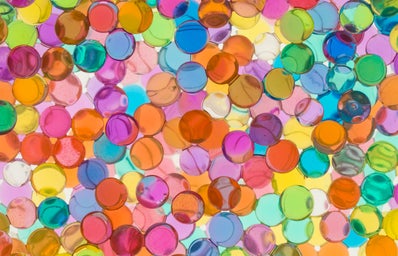In the Louvre, there are two of Michelangelo’s unfinished sculptures, called “The Prisoners.” In both of these sculptures, the human form appears to be trapped within the walls of the unfinished stone, in which the figures emerge. As with all of Michelangelo’s work, in my opinion, the figures are very life-like. The difference I see in these statues compared to most of his work is that reality meets the art medium. It is the reality that time and humans are limited. The fact that the figures are trapped in raw, untouched marble makes them appear to be uncomfortable. Or maybe, it is me as the viewer who is uncomfortable looking at the statues. There is this paradox in seeing something that seems so real trapped within the confines of something lifeless. I find these statues to be the most beautiful of Michelangelo’s work, because amidst the paradox, I see them as relatable.
Like an unsculpted statue, there was a time when I was completely trapped in marble. It started my freshmen year of college, when I struggled with an eating disorder. Counterproductive to the labors of a sculptor, it was as if the disorder was adding marble layer barriers of control, anxiety, and depression, all of which enclosed my entire being. I was a prisoner to the physical and mental illness of an eating disorder, the warden ironically being the sick part of myself that was telling me to restrict, exercise, binge, and purge. That summer, I entered an intensive outpatient treatment program (IOP). At this point, not only was I completely surrounded by untouched marble, but I also had no desire to break free. Anorexia had completely robbed me of my mind, body, and spirit-and I felt helpless.
One of the components of IOP was art therapy. Although at this time, I resisted treatment, art therapy resonated with me. Maybe it isn’t so surprising because I have always loved art. As a kid, all I wanted to do was draw and color. Before I had a full comprehension of language, let alone write my four-lettered name, I believe that I inherently knew that art was a passion of mine. My dream has never been to have a gallery opening of my work, or to one day have a painting in a museum- I have always just had this desire to create. Art gives me this sense of peace, and I guess that this has been my objective in doing art. This sense of peace comes from the way I am able to completely get lost in the act of generating something, allowing for every other thought of mine to become extinct. Other times, however, art drives me to think. And when I do, these are honest thoughts that I allow myself to feel. Art for me is freeing.
Through art, I was able to express my stress of having to eat normally again, my fear of living without an eating disorder, and recognize my hopes of getting better. Art therapy was the tool that allowed for me to start breaking through my marble confines. Expressing myself in a truthful way, elicited within me this desire to live a life worth living. A more overarching theme I found in my art was my desire to find a purpose: a purpose that was propelled by what I could contribute to the world, rather than centering my life on an unfulfilling desire to be thin.
I feel a sense of my purpose as I enter my senior year of college. I will be graduating with a major in psychology with a minor in art, a decision that was a direct outcome from my experience in treatment the summer after my freshmen year. My plan is go on to get my Master’s in Art Therapy and then my Doctorate in Psychology. My eating disorder gave me this sense of compassion for mental illness that I would never have known otherwise. I feel empathy at a deeper level when I hear of those suffering from addiction, feelings of loss of control, and people who are struggling to break away from a toxic relationship because those are the suffocating tangles of an eating disorder.
I am passionate and expressive about being an advocate for mental illness, however I feel myself become timid when eating disorders are the specific topic at hand. Right now, although I feel as if I have broken away a huge chunk of marble, I still feel as though there is this piece that is holding me down; the part of me that still sometimes uses food as a means for control, the part of me that sometimes measures my self-worth based on how much I weigh. The part of me that feels ashamed to have had an eating disorder.
Each day that we wake up in the morning, we are presented with the opportunity to chisel away at our lives, and set the prisoner within us free. It requires work, hard work. It can be scary too. We can easily make a mistake, and sometimes we do. But if we do nothing, we will stay cemented in a lifeless rock. For the past three years, I have told myself that once I am fully recovered, I will begin more outreach for eating disorders. But, life is not static and us as humans are not either. So, this is me, coming forward, just as I am at this moment. This is me, saying that recovering from an eating disorder has made me who I am. This is me, refusing to be a prisoner.

